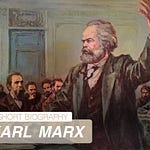Many remember the movie 'The Killing Fields', but few are aware of the history behind Pol Pot and the Khmer Rouge. Simplified history often equates his rise as merely a byproduct of the Vietnam War, but this is untrue. We look at the decades long lead up to the Khmer Rouge, from Pol Pots Marxist awakening at the University of Paris, to the various attempts at seizing power before the Vietnam War.
Among the harrowing tales of 20th-century dictators, few stories rival the sheer insanity and brutality of Pol Pot's reign. Throughout the 1970s, Pol Pot and the Khmer Rouge unleashed a reign of terror in Cambodia, seizing control of the nation and transforming it into a communist dystopia that claimed the lives of a quarter of the population. This chapter in history, inspiring the film "The Killing Fields," stands alongside the Holocaust, Soviet gulags, and the Great Ukrainian Famine as one of the most horrifying instances of mass murder in the 20th century. In these Notes From The Past, we delve into one of the darkest chapters of modern history.
During the Vietnam War, Viet Cong troops would infiltrate South Vietnam through a network of channels through Cambodia. In response, the United States initiated a secret bombing campaign targeting suspected Viet Cong outposts and supply lines beyond Vietnam, known as Operation Menu.
While this extensive bombing campaign had detrimental effects on many Cambodians, it is doubtful that this was the sole catalyst for the ascent of Pol Pot and the Khmer Rouge. American intervention in Cambodia may have exacerbated an already precarious situation. But there were other forces at play in the rise of an already unstable dictator and his chosen cadre of Marxist associates
Pol Pot, originally named Saloth Sar, was born into a prosperous family in French Cambodia. He received an education in elite Cambodian schools, traveled to Paris as an exchange student in the 1940s, and discovered a treasure trove of Marxist literature during his time in the French capital. He immersed himself in these writings, with a particular fascination for the works of Stalin. He joined various Communist organizations in France, where he had unique opportunities to engage with French and East European intellectuals.
Pol Pot's close connection to Khiea Samphan, an economist from Cambodia who also pursued Marxism in Paris, is often overlooked. Samphan, like Pol Pot, studied at the prestigious Sorbonne in Paris in 1950.
While pursuing his PhD, Samphan became an active Communist within Parisian circles and engaged with a group of Khmer intellectuals harbouring Marxist aspirations for Cambodia. Known as the 'Cercle Marxiste,' this group influenced mainstream French socialism in the 1950s, ultimately shaping Samphan's own academic pursuits. His doctoral thesis, titled 'Cambodia's Economy and Industrial Development,' emphasized Cambodia's economic deficiencies and the need for substantial reforms rooted in Dependency Theory and Marxist-Leninism. It advocated for the transformation of Cambodia into an agrarian nation fuelled by the labour of 'city dwellers.'
During this period, Pol Pot's radicalism was intensifying. He delved into Mao's writings, deepened his understanding of Stalin, and incorporated the ideas of foundational socialist thinkers like Rousseau. He aimed to construct a grand vision for revolutionary change and societal reset. These ideas would later converge with Samphan's post-revolutionary vision to formulate the Khmer Rouge's Communist blueprint for Cambodia.
In 1950, Pol Pot and a group of 18 other Cambodian students were permitted to travel to Yugoslavia, where they worked as laborers and forged close ties with other communist intellectuals. This European sojourn foreshadowed the events to come, as the Khmer circle was already suppressing those deemed 'counter-revolutionaries' and consolidating a distinct ideology that could be transported back to Cambodia and applied to the populace.
Pol Pot returned to Cambodia in 1953, to a Cambodian government grappling with various political struggles. He became a member of the Cambodian arm of the Viet Minh (known as the Khmer Viet Minh), and participated in the struggle against Cambodian leader Norodom Sihanouk. This Marxist insurgency was underway more than a decade before the US "Operation Menu" devastated the border region between Cambodia and Vietnam.
Following a series of setbacks and internal challenges in the early 1960s, the Viet Minh retreated to North Vietnam. During this period, Pol Pot restructured the Kampuchean Labor Party into the new Communist Party of Kampucheah (CPK) and launched another campaign against leader Sihanouk in 1963, which also proved unsuccessful.
It wasn't until 1970 that the Khmer Rouge began to rise. With the United States backing a new government in Cambodia, Sihanouk was ousted, and the CPK initiated a rebellion. The Cambodian Civil War ensued throughout the early 1970s, with the Khmer Rouge often prevailing over the American-backed Cambodian government forces due to support from North Vietnam.
After years of conflict, Cambodia fell under the rule of Pol Pot and the new Khmer Rouge government, known as Democratic Kampuchea, in 1976. This violent period would serve as a testing ground for the myriad Marxist ideas championed by French intellectuals in Paris nearly two decades earlier. Many of the original Khmer students who absorbed these ideas held positions of power within the Khmer government.
The objective was straightforward: Cambodia needed a 'great reset.' Drawing from Pol Pot's unique Nationalist-Stalinist ideology, everything from Cambodian history to the existence of cities and even sunglasses was slated for eradication. History was to be reset entirely, and a 'year zero' was declared. Urbanites, considered parasites of 'soft living' and a threat to the Marxist ideal, were forcibly relocated from cities to work in agriculture.
And what was the fruit of Pol Pot’s incredible plan? With centralization dominating every aspect of life, the Cambodian government either starved or deliberately exterminated up to a quarter of its population.
Immediately following the Khmer Rouge takeover of Cambodia in 1975, a 'year zero' was declared, marking a 'rebirth of Cambodian history.' This had long been planned by Pol Pot and the Khmer Rouge leadership, beginning with the eradication of foreign ideas and progressing to ideological differences. In 1976, the Democratic Kampuchea was established, further cementing the goal of reorienting society.
This core idea, outlined by Pol Pot, Samphan, and others, focused on redefining society. A revolutionary class, primarily composed of peasants, was to seize power, erasing all prior cultures, traditions, and even 'memories' of the society before Year Zero. This cultural reset manifested in various ways, even affecting traffic laws. For instance, driving on the left side of the road was mandated, despite the impracticality of unloading bus passengers into the street. This shift was seen as a rejection of 'Western ideas.'
For the Khmer leadership, the ideal was obliteration of pre-revolutionary knowledge and the removal of 'Westernized' and 'corrupt' urbanites. Khmer doctrine advocated for a classless agrarian system, with the ideal Cambodian being an uneducated agricultural worker. To achieve this, Pol Pot first targeted perceived obstacles to a socialist system: religion was outlawed, private property abolished, the concept of 'family' declared ‘foreign’, and families were forcibly separated. Money and banking were dismantled and destroyed, and all books were burned. Hospitals, factories, and educational institutions were shuttered, resulting in dire hygiene conditions that led to approximately 80% of Cambodia's population contracting malaria by 1976, just one year after the 'reset' began.
The population was categorized into two groups: 'New People' and 'Old People.' The former, comprising those who were educated, lived in urban areas, or were part of a 'non-peasant class,' were stripped of ownership rights, forced to toil for a minimum of 10 hours a day, and provided rations so meagre that starvation was almost certain for many. The Khmer Rouge's motto with respect to the New People was chilling: 'To keep you is no benefit. To destroy you is no loss.'
Fortunately, Pol Pot's time in power was limited, and his vision was never fully realized; his destructive pursuit of a Marxist reset was ironically curtailed by Communist Vietnam, which engaged the Khmer Rouge in a border conflict, ultimately compelling Pol Pot and much of the Khmer leadership into exile.
Pol Pot's ideas were not unique; he drew inspiration from the 'Year One' concept established after the French Revolution. The notion of a cultural reset is embedded not only in Marxist ideologies but also in any socialist ideology seeking control over society. The 'old' ways must be entirely eradicated for a new order to take root. Pol Pot and Samphan's ideology represents an exceptionally brutal manifestation of communism in action, yet it underscores the destructive pattern inherent in socialist ideas.
The connection between the Khmer Rouge leadership and French Communist intellectuals is an important one. The French have long been receptive to Marxism, particularly in the 1940s when the Soviet Union was perceived as a beneficial ally to the Western world.
During this era, many French intellectuals wielded influence while openly endorsing classical Marxism, a time predating the publication of 'The Gulag Archipelago' by Aleksandr Solzhenitsyn and the associated fallout. Numerous intellectuals were closely connected to Cambodian Khmer individuals in France. One such figure was Samir Amin, a French Marxist political scientist known for his 'Eurocentrism' concept, mentioned in Samphan's 1959 doctoral thesis. Samphan acknowledged incorporating Amin's ideas and theories into his work, suggesting that many aspects of Cambodia's tragedy could be attributed, in part, to intellectuals like Amin.
Even after the fall of the Khmer Rouge in 1979, Amin continued to praise their actions, describing it as 'one of the major successes of the struggle for socialism in our era' in 1981. French Communist intellectuals quickly shifted their focus to the next iteration of Marxist thought—Post-Structuralist Post-Modernism. This demonstrates the tendency to repackage Marxist ideas whenever they come under criticism, perpetuating this destructive ideology to the present day.
Despite the well-documented failures of Marxist ideals, we sometimes fail to recognize them in contemporary movements. The history of the Khmer Rouge serves as a chilling reminder of the consequences that can arise from a forced societal 'reset'. A concept championed by totalitarian regimes over the centuries that has so far, ended in bloodshed and misery.











